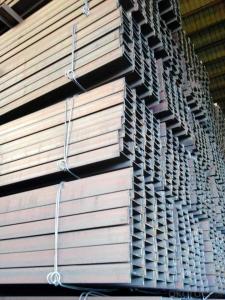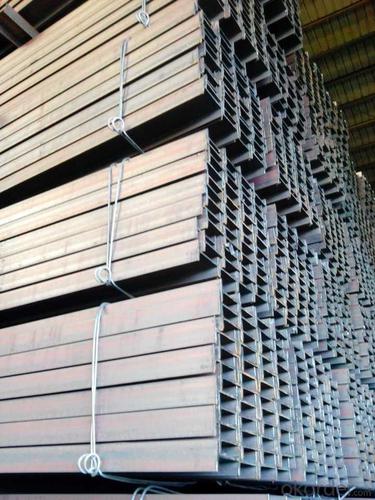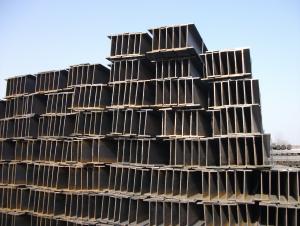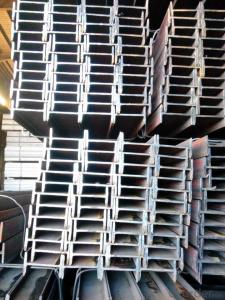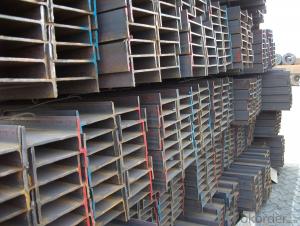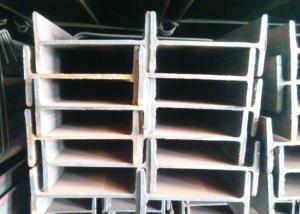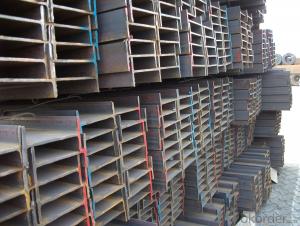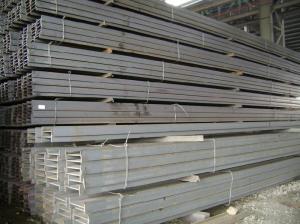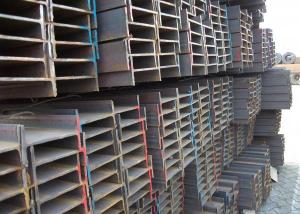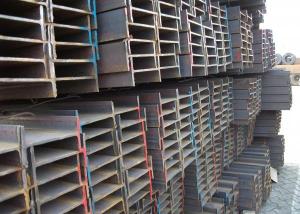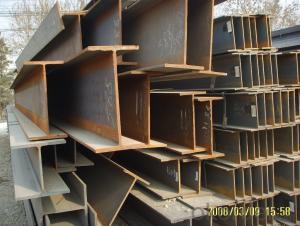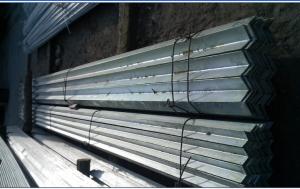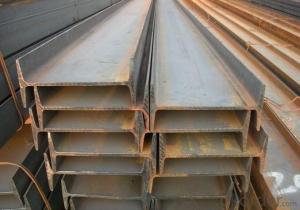European Standard of IPEAA
- Loading Port:
- China Main Port
- Payment Terms:
- TT or LC
- Min Order Qty:
- -
- Supply Capability:
- -
OKorder Service Pledge
OKorder Financial Service
You Might Also Like
Product Description:
OKorder is offering European Standard of IPEAA at great prices with worldwide shipping. Our supplier is a world-class manufacturer of steel, with our products utilized the world over. OKorder annually supplies products to European, North American and Asian markets. We provide quotations within 24 hours of receiving an inquiry and guarantee competitive prices.
Product Applications:
1. structure construction and electronic tower building construction
2. bridge, trestle, autos, brackets, machinery
3.It is widely used in various building structures and engineering structures such as roof beams, bridges, transmission towers, hoisting machinery and transport machinery, ships, industrial furnaces, reaction tower, container frame and warehouse etc.
Product Advantages:
OKorder's European Standard of IPEAA are durable, strong, and resist corrosion.
Main Product Features:
· Premium quality
· Prompt delivery & seaworthy packing (30 days after receiving deposit)
· Corrosion resistance
· Can be recycled and reused
· Mill test certification
· Professional Service
· Competitive pricing
Product Specifications:
1.Standard: EN10025, GB Standard
2.Sizes: 80mm-200mm
Dimensions | |||||
| h | b | s | t | Mass Kg/m |
IPEAA80 | 80 | 46 | 3.20 | 4.20 | 4.95 |
IPEAA100 | 100 | 55 | 3.60 | 4.50 | 6.72 |
IPEAA120 | 120 | 64 | 3.80 | 4.80 | 8.36 |
IPEAA140 | 140 | 73 | 3.80 | 5.20 | 10.05 |
IPEAA160 | 160 | 82 | 4.00 | 5.60 | 12.31 |
IPEAA180 | 180 | 91 | 4.30 | 6.50 | 15.40 |
IPEAA200 | 200 | 100 | 4.50 | 6.70 | 17.95 |
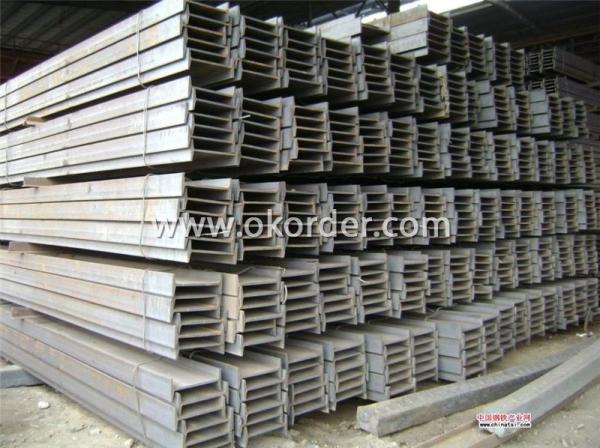
Package & Delivery Terms of IPEAA Beam
1. Packing: it is nude packed in bundles by steel wire rod
2. Bundle weight: not more than 3.5MT for bulk vessel; less than 3 MT for container load
3. Marks:
Color marking: There will be color marking on both end of the bundle for the cargo delivered by bulk vessel. That makes it easily to distinguish at the destination port.
Tag mark: there will be tag mark tied up on the bundles. The information usually including supplier logo and name, product name, made in China, shipping marks and other information request by the customer.
If loading by container the marking is not needed, but we will prepare it as customer request.
4. All the IPEAA Beams will be delivered to the port of Tianjin within 45 days after receiving the Original L/C at sight or the advance payment by T/T.
5. Transportation: the goods are delivered by truck from mill to loading port, the maximum quantity can be loaded is around 40MTs by each truck. If the order quantity cannot reach the full truck loaded, the transportation cost per ton will be little higher than full load.
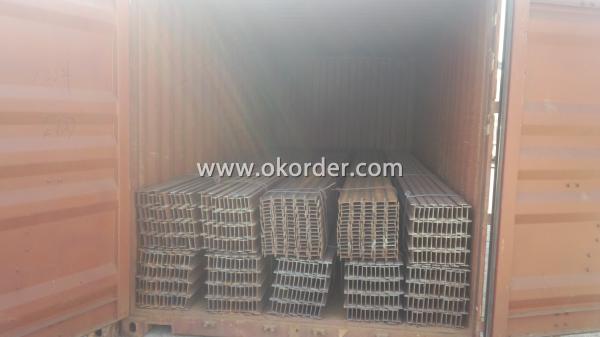
Production Flow of IPEAA Beam
Material prepare (billet) —heat up—rough rolling—precision rolling—cooling—packing—storage and transportation
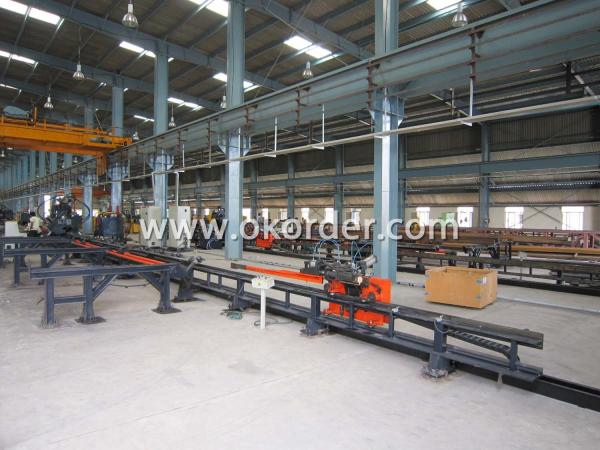
FAQ:
Q1: Why buy Materials & Equipment from OKorder.com?
A1: All products offered byOKorder.com are carefully selected from China's most reliable manufacturing enterprises. Through its ISO certifications, OKorder.com adheres to the highest standards and a commitment to supply chain safety and customer satisfaction.
Q2: How do we guarantee the quality of our products?
A2: We have established an advanced quality management system which conducts strict quality tests at every step, from raw materials to the final product. At the same time, we provide extensive follow-up service assurances as required.
Q3: How soon can we receive the product after purchase?
A3: Within three days of placing an order, we will begin production. The specific shipping date is dependent upon international and government factors, but is typically 7 to 10 workdays.
- Q: Can steel I-beams be used in energy-efficient building designs?
- Energy-efficient building designs can incorporate steel I-beams as they offer numerous benefits. Firstly, steel I-beams possess a high strength-to-weight ratio, allowing for the construction of lighter and slender structural elements. This means that less material is required, resulting in a reduced overall weight of the building. Consequently, less energy is needed during construction, transportation, and erection, leading to lower embodied energy. Additionally, steel I-beams can be manufactured with great precision, ensuring accurate dimensions and minimizing waste during construction. Furthermore, the use of prefabricated steel components accelerates the construction process, reducing energy consumption related to on-site labor and equipment. In terms of energy efficiency during the operational phase, steel I-beams contribute to the thermal performance of a building. Steel has low thermal conductivity, meaning it is a poor conductor of heat. Consequently, it enables better insulation and reduces heat transfer through the building envelope, resulting in decreased heating and cooling loads. Furthermore, steel can be combined with insulation and thermal breaks to create a more energy-efficient building envelope. Moreover, steel is highly durable and resistant to pests, rot, and decay. This durability minimizes the need for frequent maintenance and replacement, thereby conserving energy and resources in the long run. In conclusion, due to their high strength-to-weight ratio, precision manufacturing, thermal performance, durability, and potential for prefabrication, steel I-beams can effectively contribute to energy-efficient building designs.
- Q: Can steel I-beams be used in hotels or hospitality buildings?
- Yes, steel I-beams can be used in hotels or hospitality buildings. Steel I-beams are commonly used in the construction industry due to their strength, durability, and ability to support heavy loads. They provide structural support and can be used in various applications, including framing, columns, and beams, making them suitable for hotels or hospitality buildings where large open spaces and high load-bearing capacities are often required.
- Q: What are the different methods of transporting steel I-beams to construction sites?
- There are several methods of transporting steel I-beams to construction sites, depending on factors such as the size and weight of the beams, as well as the accessibility of the construction site. Here are some of the different methods commonly used: 1. Flatbed trucks: This is the most common method of transportation for steel I-beams. Flatbed trucks are equipped with a large flat platform, allowing for easy loading and unloading of the beams. They can transport a wide range of sizes and weights of I-beams, making them a versatile option. 2. Crane trucks: For larger and heavier I-beams, crane trucks are often used. These trucks have a hydraulic crane mounted on the back, which can lift and move the beams onto the construction site. Crane trucks are especially useful when the construction site has limited access or requires precise placement of the beams. 3. Rail transportation: In some cases, when the distance between the steel mill and the construction site is significant, rail transportation may be used. Specialized railcars designed for carrying large and heavy loads, such as flatcars or gondolas, are utilized to transport the steel I-beams. This method is efficient for long-distance transportation, especially for large quantities of beams. 4. Barge transportation: When construction sites are located near bodies of water, such as rivers or coastal areas, barge transportation can be a viable option. Barges are large flat-bottomed boats that can carry heavy loads. Steel I-beams can be loaded onto the barge, and then transported to the construction site by water, providing an efficient and cost-effective method for large-scale projects. 5. Air transportation: In exceptional cases, when time is of the essence or when access to the construction site is extremely challenging, air transportation may be considered. Helicopters or cargo planes can be utilized to lift and transport the steel I-beams directly to the construction site. However, due to the high costs involved, this method is typically used for urgent or remote projects. It is important to consider the size, weight, and accessibility of the construction site when determining the most suitable method of transportation for steel I-beams. Each method has its advantages and limitations, and the choice will depend on the specific requirements and constraints of the project.
- Q: Can steel I-beams be used for industrial warehouses?
- Yes, steel I-beams can be used for industrial warehouses. Steel I-beams are commonly used in the construction of industrial warehouses due to their high strength and durability. These beams provide structural support and can withstand heavy loads, making them ideal for large-scale industrial applications. Additionally, steel I-beams are versatile and can be easily customized to meet specific design requirements, allowing for flexibility in warehouse construction. Overall, steel I-beams are a popular choice for industrial warehouses due to their reliability, strength, and adaptability.
- Q: How do steel I-beams perform in terms of load distribution?
- Steel I-beams are designed specifically to efficiently distribute loads over a large area. Their unique shape and structural properties make them excellent at carrying heavy loads and distributing them evenly along their length. This load distribution capability allows steel I-beams to provide strong support and stability, making them a preferred choice in various construction and engineering applications.
- Q: Can steel I-beams be used for industrial crane runways?
- Yes, steel I-beams can be used for industrial crane runways. Steel I-beams are commonly used in the construction of crane runways due to their high strength and durability. They provide excellent load-bearing capabilities and can withstand heavy loads and frequent crane movements, making them suitable for industrial applications.
- Q: Can steel I-beams be used in the construction of schools and educational facilities?
- Schools and educational facilities can definitely make use of steel I-beams in their construction. Steel I-beams offer numerous benefits in building, making them a popular option for various types of structures, including schools. To begin with, steel I-beams are renowned for their strength and durability. They can bear heavy loads, allowing for the creation of expansive open spaces without the need for excessive support columns or walls. This is especially advantageous in educational facilities, as it permits adaptable spaces that can be easily reconfigured to meet changing needs and accommodate different activities. Additionally, steel I-beams possess fire-resistant qualities, which are crucial for ensuring the safety of students and staff. Steel does not burn, melt, or contribute to the spread of fires, making it an excellent choice for schools where fire safety is a top priority. Moreover, steel is an environmentally friendly and sustainable material. It can be recycled and reused, reducing waste and minimizing the construction process's carbon footprint. This aligns with the increasing focus on sustainability in educational facilities. Furthermore, steel I-beams prove to be cost-effective in the long run. Although the initial investment in steel construction may be higher compared to other materials, the durability and low maintenance requirements of steel make it a cost-efficient choice over its lifespan. This is particularly advantageous for schools with limited budgets, as it reduces the need for frequent repairs and replacements. Lastly, steel I-beams offer design flexibility, allowing architects and designers to create modern and visually appealing educational facilities. The sleek and slender profile of the I-beams can be incorporated into various architectural styles, providing a contemporary and aesthetically pleasing look to the building. In conclusion, steel I-beams are a suitable and advantageous option for constructing schools and educational facilities. Their strength, fire-resistant properties, sustainability, cost-effectiveness, and design flexibility make them an ideal material for establishing safe, functional, and visually appealing learning environments.
- Q: Can steel I-beams be used in agricultural or farming structures?
- Yes, steel I-beams can be used in agricultural or farming structures. Steel I-beams are commonly used in construction due to their strength and durability, making them suitable for a variety of applications, including agricultural buildings. These structures often require strong support to withstand heavy loads, such as storing equipment, livestock, or crops. Steel I-beams provide excellent load-bearing capacity and can withstand harsh environmental conditions commonly found in farming and agricultural settings, such as extreme temperatures, high humidity, and corrosive elements. Additionally, steel I-beams can be easily fabricated and customized to meet specific design requirements, making them a versatile choice for constructing various agricultural structures like barns, storage sheds, grain bins, or even large greenhouse frameworks. Overall, steel I-beams offer a reliable and long-lasting solution for agricultural and farming structures.
- Q: Can steel I-beams be used in historical building preservation projects?
- Yes, steel I-beams can be used in historical building preservation projects. They offer structural support and can help strengthen the building's framework without compromising its historical integrity. However, it is important to consider the specific requirements and guidelines of the preservation project to ensure that the use of steel I-beams aligns with the goals and objectives of preserving the historical building.
- Q: Help: how can I sample steel beams?
- Randomly extract one or more of the root, cut down a paragraph, how much you need to cut the amount of steel on the head, 50cm is not countless
Send your message to us
European Standard of IPEAA
- Loading Port:
- China Main Port
- Payment Terms:
- TT or LC
- Min Order Qty:
- -
- Supply Capability:
- -
OKorder Service Pledge
OKorder Financial Service
Similar products
Hot products
Hot Searches
Related keywords
